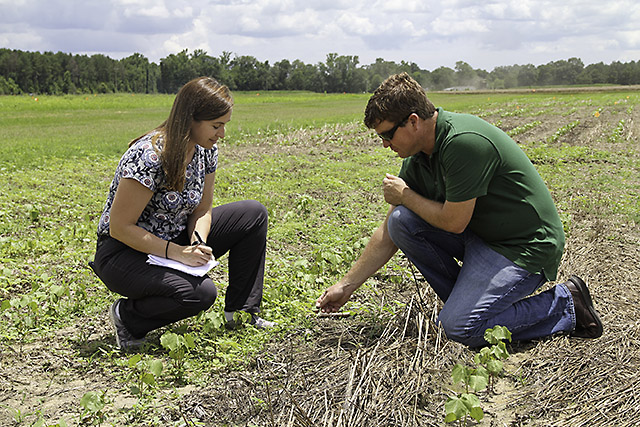The cotton plant is a broad-leaf perennial tree domesticated to grow as an annual crop.
Most field crops, such as maize, wheat, sugarcane, and sorghum, are in the grass family with shallow, horizontal roots, narrow leaves, and they are annual crops, meaning they terminate and die naturally every year. Soybeans and ground nuts are legumes, and they are also annual crops with shallow soil-enriching roots.
In the case of cotton, the situation is as follows a little different: Cotton has broad leaves, which produce a high photosynthetic rate. Cotton has bark on its stem and branches which protect it from water loss. Many species of cotton survive more than one year (if allowed to grow in the wild), and cotton has a tap root that goes down 1.5 meters to reach nutrients and water. Therefore, cotton is almost always the greenest and lushest plant in any micro-ecosystem.
Beneficial for the environment
Cotton also benefits the environment by sending roots deep into the soil, which brings nutrients to the surface, improves capillary action and keeps soil from settling and becoming compacted. This allows water to percolate, and the yields for other crops grown in rotation with cotton are higher.

Sophisticated
The cotton farmer must have a lot of know-how to produce this valuable raw material in the best possible quality. This also includes insecticides, as the natural fibre is an attractive food for insects. Farmers who grow cotton must know more about insects’ life cycles, pesticides and chemistry, and the interdependence of temperature, rainfall, soil condition, nutrient levels and plant physiology than farmers who grow simpler crops. Thus, cotton is a more “technical” crop to handle than most others.
Data
Cotton accounts for about 6% by value of all the plant protection chemicals (pesticides) sold in the world (Cropnosis), including 11% of all insecticides, 4% of herbicides, 4% of growth regulators/desiccants/defoliants, and 1% of world fungicide sales. According to ICAC (Cotton Data Book 2020), the cost of all pesticides used on cotton, including insecticides, herbicides, fungicides, defoliants and growth regulators, average US$160 per hectare, or about $5.3 billion in total worldwide.
Community
Pesticide use on cotton helps all farmers in a region. When farmers manage their cotton crops correctly to optimize yields, they are automatically reducing insect pressure on neighboring crops and on crops planted in succeeding seasons, because the insects are attracted to cotton. This is one of the reasons that food production rises in areas where cotton is grown. If cotton was not grown in a particular area, the insects would still be there, and farmers would have to use the same pesticides to control the insects on their other crops.
Authors: Rafiq Chaudhry and Terry Townsend, April 2020

